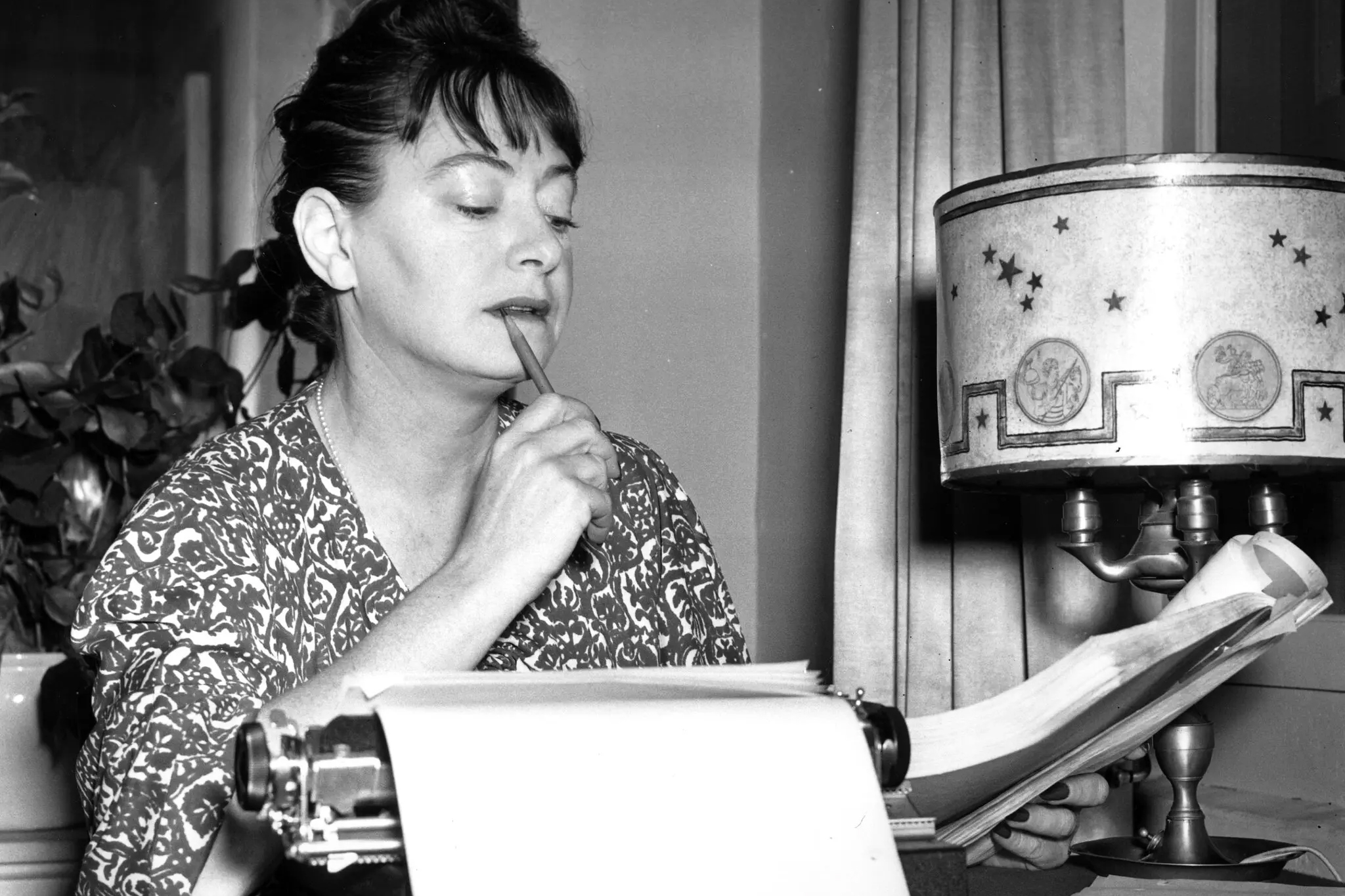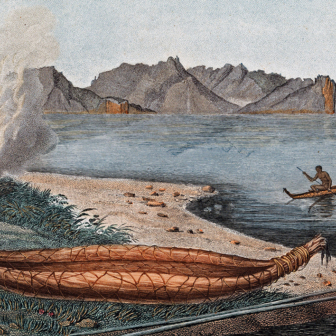It was in 1951, when I was about to turn thirteen, that I rode up the Californian coast from Los Angeles to San Francisco with my stepfather. For some reason my mother had gone ahead and we were to meet her there. Cars — even fancy ones like my stepfather’s Jaguar — weren’t airconditioned then, and on the first leg of our trip the car grew uncomfortably hot, with the sun beating on the highway creating those luscious pools of water that disappear the minute you approach them, reminding us that then, as now, Southern California is basically a desert.
Further north, a violent thunderstorm had me quaking with terror. Attempting to calm me, my stepfather said we’d break the journey at San Simeon, site of the fanciful castle where the media magnate William Randolph Hearst closeted his mistress. To stress the point and possibly amuse me, he recited a poem:
Upon my honour
I saw a Madonna
in a niche behind a door
in the house of
a famous son-of-bitch
and his equally well-known whore.
Of course, my stepfather had to explain it to me, and in so doing lodged it in my brain forever. The verse, he said, was by Dorothy Parker, the same noted wit who’d quipped that “men never make passes at girls who wear glasses.”
But as Gail Crowther discovered researching her new book, Dorothy Parker in Hollywood, the verse and the quip are either misattributed or misquoted (or both). The Parker we celebrate is the superlative New York wisecracker whose fame is such that she is attributed even with bon mots that aren’t hers — although she did confess to writing “men seldom make passes at girls who wear glasses.”
The legend grew and grew because Parker was the complex, contradictory, fascinating human being she was. As one contemporary put it, “Dottie was attractive to everybody — those eyes were wonderful, and the smile! It wasn’t difficult to fall in love with her… She was both wide open and the goddamnedest fortress at the same time.”
Carving a career as a womanly woman at a time of peak misogyny, Parker could be incisive and cutting, even cruel, but also sweet and puzzlingly self-deprecating. Unlike many writers, she didn’t leave much of an archive. Constantly on the move, she abandoned or destroyed most of her possessions, which means that unearthing fresh material has been matter of luck and persistence. Yet enough in the way of interviews and profiles, not to mention an FBI file, exists for two other posthumous biographies to have appeared before Crowther’s: Leslie Frewin’s The Late Mrs Dorothy Parker, published in 1986, and Marion Meade’s Dorothy Parker: What Fresh Hell Is This?, which appeared two years later. Parker herself flatly refused an offer to publish an autobiography but added that if she ever did write one she’d have to call it “Mongrel.”
She was born Dorothy Rothschild in 1893, her father Henry a Jewish garment manufacturer (unrelated to the Rothschilds), her mother Eliza of Scottish descent. In what Crowther argues was the defining event of her life, Eliza died when Dorothy was about to turn five. After the arrival of a stepmother, Dorothy was enrolled in a convent school she hated and from which she was duly expelled. She was then sent to a progressive New Jersey boarding school that proved to be the saving of her in an otherwise emotionally starved childhood.
A series of further family tragedies culminated in her father’s death; Dorothy then was more or less on her own. In her own words, she “fell into writing, being one of those awful children who wrote verses.” Following what must have been a hilarious stint as a ballroom dancing teacher, she submitted a poem to Vanity Fair lampooning society women. As Crowther says, it was vintage Parker. Then she found work at Vogue as a caption writer. But it was Vanity Fair, a quintessentially New York magazine, that was her “natural home.” Eventually she joined its staff.
Not long after, she married Edwin Pond Parker II, a Wall Street stockbroker. Once America entered the first world war Eddie, as he was known, enlisted as an ambulance driver and, “after what seemed to her merely five minutes of matrimony,” was on his way to France. While he was away Dorothy crafted her persona as a snappy review writer — for a time Manhattan’s only female theatre critic — a member of the legendary Algonquin Round Table literary circle, and the author of bittersweet short stories.
Eddie, meanwhile, was the only survivor when an enemy bomb hit his ambulance. He became an alcoholic, the first in a string of drink-addicted, uncaring lovers Dorothy Parker collected over the years.
It was a hard life for any woman, particularly for a working one. The 1920s opened with Prohibition, the unintended consequence of which was to make Americans — Dorothy conspicuously among them — drink like never before. Forsaken by a lover, she found herself pregnant, had a risky illegal abortion, twice attempted suicide, and was eventually tempted by what seemed the easy money of Hollywood.
The movies had by this time left the east for California, where the light was better for filming and the studios could escape the legal noose of Thomas Edison’s Kinetoscope patent. Even before sound came in 1927, producers like Sam Goldwyn were looking for writers to give his pictures class and were willing to pay good money, at least to the famous ones.
The fate of the writer in Hollywood looms large in the industry’s mythology. The stepfather who took me to San Simeon had been a part, if a small one, of that legendary east-coast exodus. Scott Fitzgerald, Ben Hecht, William Faulkner, Robert Benchley — the names are legion, and their ranks grew further after the 1929 crash.
Parker, whose waspish copy cost her the Vanity Fair job, hung on in Manhattan, freelancing for the New Yorker and publishing a second book of verse, until her self-destructive lifestyle left her broke enough to answer the siren call. She arrived on the west coast at the end of 1928, and was contracted to MGM the following year.
Apart from the scarcity of archival material, Gail Crowther’s challenge in writing Dorothy Parker in Hollywood was to understand why its subject, a woman best known as the quintessential New Yorker, ended up spending thirty-five years in Hollywood, a place she repeatedly insisted she hated.
Parker was an unreliable commentator on her likes and dislikes, but it’s also true that her first taste of the screenwriter’s role seems to have unhinged her. After fulfilling her three-month contract, she fled to New York, where she tried writing a novel that never got anywhere. Viking published a second book of her stories instead, but the time wasted on the novel along with another disastrous love affair had her twice attempting suicide again.
She didn’t return to Hollywood, now in the midst of the Depression, until 1934. But this time she had a partner who genuinely loved her and was the ideal co-writer — good at structuring lengthy narratives while giving her the lead on the witty dialogue the studios wanted her for. This was Alan Campbell, a handsome actor-cum-writer eleven years her junior who didn’t seem to mind how disorganised she was so long as she made him laugh.
The pair of them married, signed a ten-week contract with Paramount as a husband-and-wife team and stuck with Hollywood intermittently for the next thirty years. They made colossal amounts of money, spent the better part of it, and won the Oscar for their screenplay of A Star Is Born.
A dark spot was Parker’s twice miscarrying pregnancies they both wanted, another was Campbell’s interfering mother, and another a hysterectomy occasioned by painful fibrous tumours. The relationship steadily deteriorated, with Campbell eventually finding an out by enlisting in the army when America entered the Second World War. They divorced in 1947, remarried in 1950, and shared what became a living hell in unimaginable squalor until Campbell’s possible suicide in 1963. Parker died in New York in 1967, leaving her meagre estate to Martin Luther King Jr, who would be assassinated the following year. Musing on the billions and billions who’ve lived and died on earth, Parker concluded that “there are no happy endings.”
If this was all there was to Dorothy Parker’s story, it’s unlikely that the woman noted for her pithy verse and devastating barbs would be as revered as she’s become. But Crowther also records another side to her, the woman consistently fighting for justice on the basis of an outlook forged in childhood trauma and maintained through her challenging adulthood. This was the Parker who joined the campaign to free the anarchists Nicola Sacco and Bartolomeo Vanzetti after their controversial murder convictions, wrote from Spain during the Spanish civil war, and was instrumental in establishing the Screenwriters Guild and the Hollywood Anti-Fascist League. This was the Dorothy Parker who said, “Well, you see, I don’t feel funny anymore. I don’t think these are funny times…”
Even when she was down and out and could ill afford it, Parker threw herself into political activism. She was hauled in front of the House Un-American Activities Committee and paid for it when Hollywood turned against her, as it did against so many. The irony is that we mightn’t know as much as we do about her life during those years if the FBI hadn’t opened that file on her.
Having grown up in Hollywood during that ignominious period, I may be more appreciative of Dorothy Parker in Hollywood than some. Yet my hunch is that this is a book that will engage other readers as much as it has me. It’s an illuminating, sensitively written tale about a woman who, for all her flaws and complexities, was nothing short of remarkable. •
Dorothy Parker in Hollywood
By Gail Crowther | Simon & Schuster | $52.99 | 304 pages




